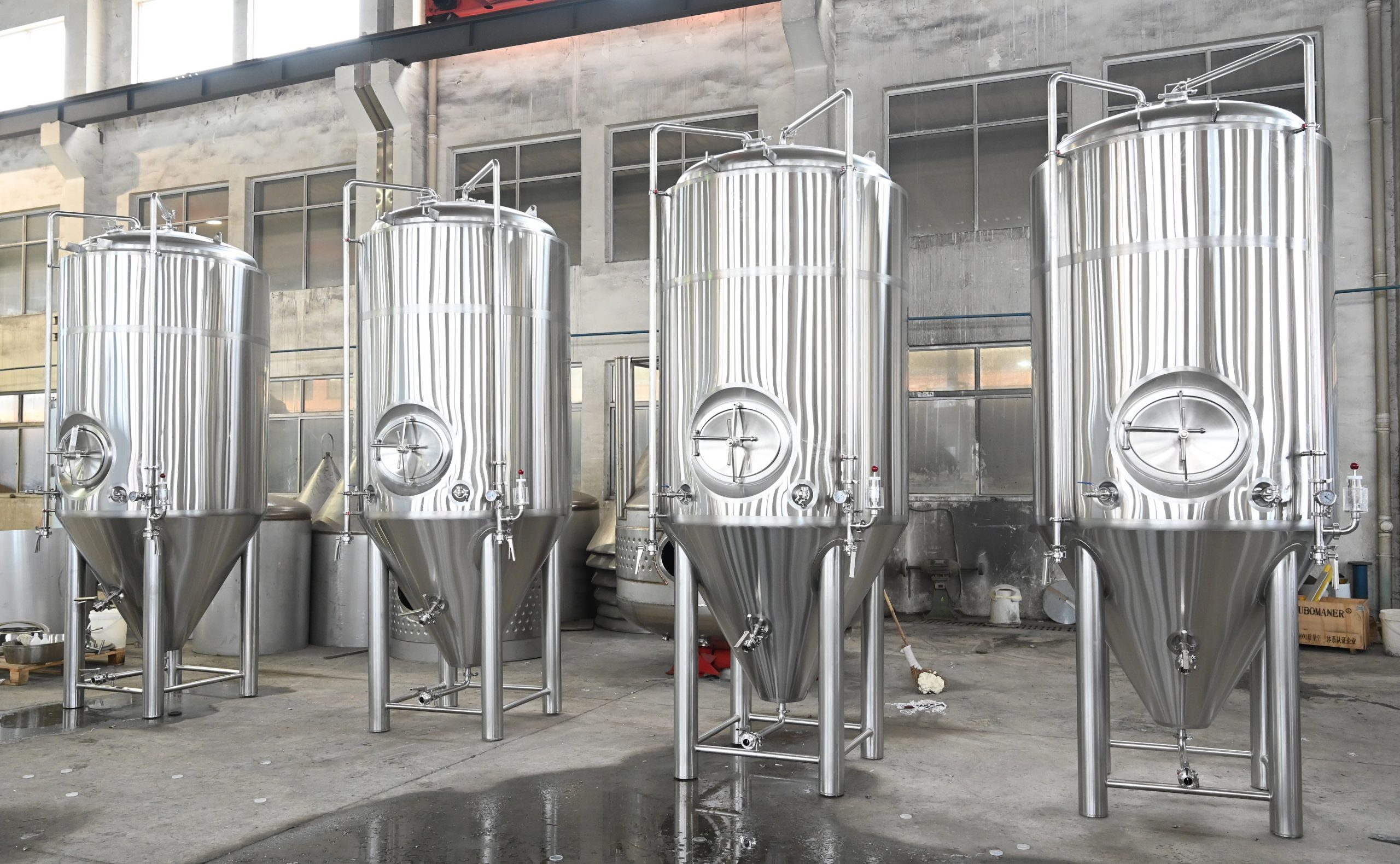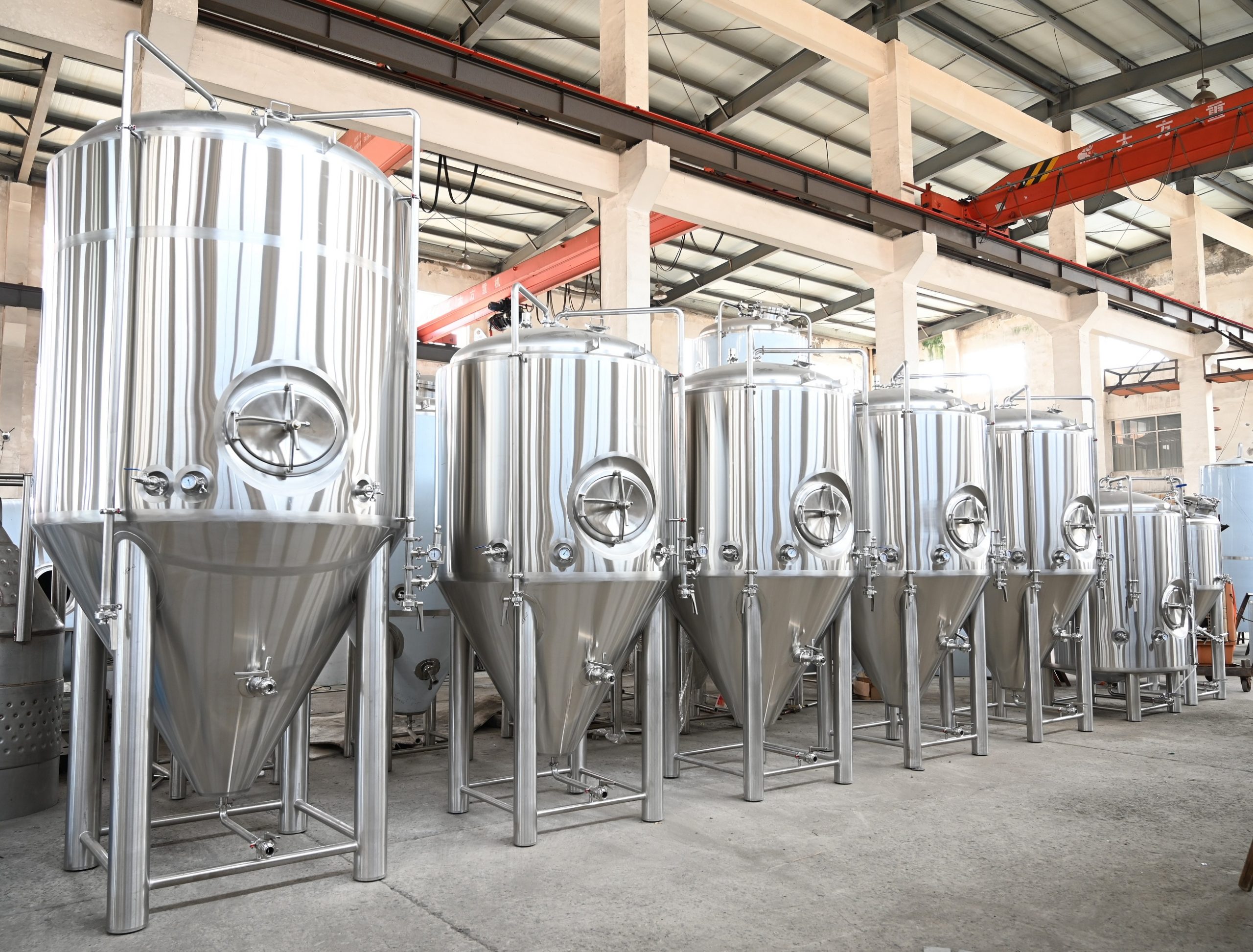
The Reasons And Solutions Of The Freezing For Beer Fermentation Tanks

The freezing of beer fermentation tanks can cause various issues in the brewing process, including stalled fermentations, damage to equipment, and potential off-flavors in the beer. Here are some common reasons for the freezing of beer fermentation tanks and possible solutions:
1.Reasons for Freezing:
Low Ambient Temperatures: Extremely cold weather can cause the temperature inside the fermentation area to drop significantly, leading to the freezing of the beer inside the tanks.
2.Solutions:
Insulation: Properly insulate the fermentation area to maintain a stable temperature. Insulated walls, doors, and roofs can help. Additionally, insulating the fermentation tanks themselves can provide protection against extreme cold.
Heating Devices: Install electric or gas heaters in the fermentation room to maintain a consistent temperature. These heaters can be controlled using thermostats to ensure the temperature stays above freezing.
Tank Jackets: Use fermentation tank jackets specifically designed for brewery tanks. These can be wrapped around the tanks and adjusted to provide controlled heating.
Heat Tracing: Apply heat tracing systems to pipes and valves to prevent freezing of beer lines and equipment. These systems use electrical heating elements to keep liquids flowing.
Thermal Blankets: For outdoor fermentation tanks, use thermal blankets designed to withstand cold temperatures. These blankets cover the tanks and provide additional insulation.
Monitoring and Alarm Systems: Install temperature monitoring and alarm systems that will alert you if the temperature drops below a safe level. This allows you to take action before freezing occurs.
Glycol Heating: If your brewery uses a glycol cooling system for fermentation temperature control, it can be reversed to provide heat when needed, preventing freezing.
Fermentation Schedule Adjustment: Plan your fermentation schedules to coincide with milder weather or use yeast strains that are more cold-tolerant if extreme cold is anticipated.
Insulated Tanks: If you’re upgrading or expanding your brewery, consider investing in fermentation tanks with built-in insulation or jackets designed to maintain temperature.
Recirculation: Implement a recirculation system within the fermentation tanks to keep the beer moving. This can help prevent localized freezing.
Emergency Shutdown Procedures: Develop and communicate clear emergency procedures for shutting down or moving beer in case of extreme cold. This can help minimize damage and product loss.
Heat Exchangers: Install heat exchangers in the glycol loop to preheat the glycol solution before it enters the fermentation tanks. This can help maintain the desired fermentation temperature.
The specific solution you choose will depend on the infrastructure of your brewery, your budget, and the severity of the cold weather conditions. Regular monitoring of the fermentation temperature is crucial to ensure that freezing is prevented or addressed promptly. Frozen fermentation tanks can lead to a range of issues that can affect the quality of the beer and the operation of the brewery.



















